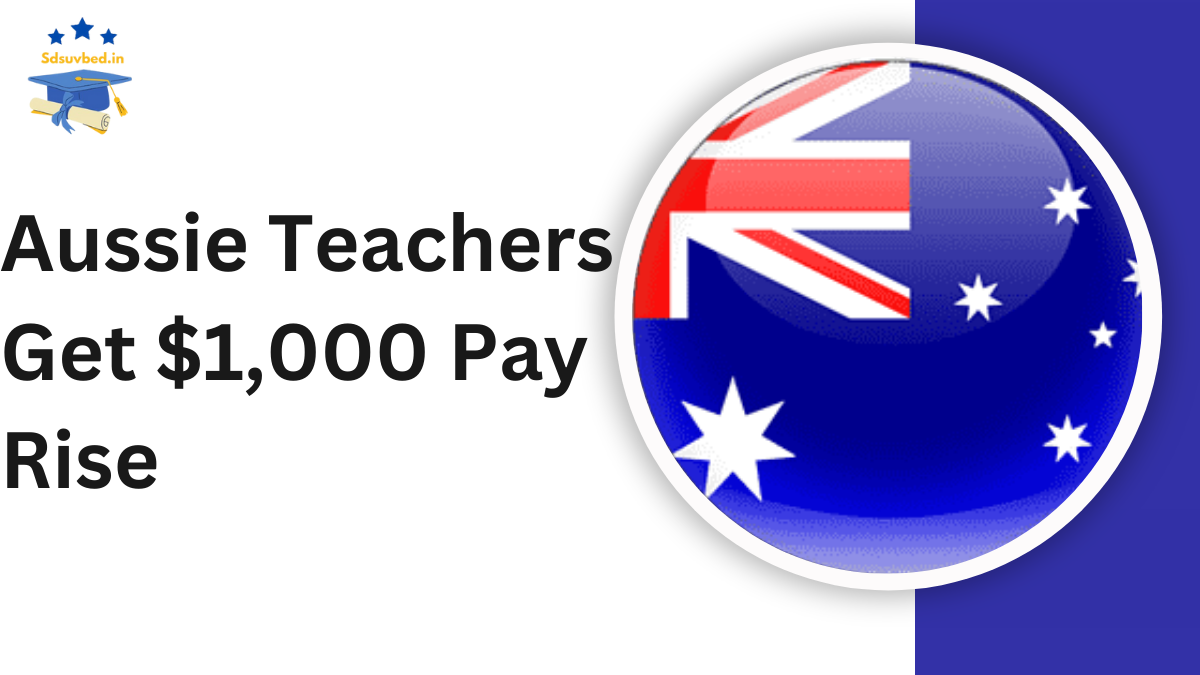Public school teachers in New South Wales (NSW) are set to benefit from a transformative new pay agreement aimed at improving conditions for educators across the state. The deal, agreed upon by 95,000 teachers, includes a 9% salary increase over three years and a $1,000 cost-of-living payment to address rising inflation.
This agreement, developed in collaboration with the NSW Department of Education, reflects the government’s commitment to making teaching an attractive and competitive profession.

Breakdown of the Pay Increase
The agreement details structured salary increases and provisions for inflation adjustments:
- Annual Salary Increase:
- Year 1: 3%
- Year 2: 3%
- Year 3: 3%
- Cost-of-Living Adjustment:
Teachers will receive a $1,000 payment if inflation exceeds 4.5% in the year leading up to March.
These changes aim to keep teacher salaries competitive while addressing inflation’s impact on living costs.
Impact on Teacher Salaries
The new deal builds upon significant pay increases introduced last year:
- Starting Salary: Increased from $75,791 to $85,000.
- Senior Teacher Salary: Raised from $113,042 to $122,100.
These improvements are designed to make the teaching profession more appealing, helping to address the persistent teacher shortage in NSW schools.
Enhanced Work Conditions for Teachers
The agreement includes significant provisions to improve teachers’ work-life balance and overall job satisfaction:
- Flexible Work Arrangements:
Teachers can take advantage of job-sharing and part-time opportunities to better balance their personal and professional lives. - Leave Without Pay Options:
Teachers can request leave without pay for personal or family needs, ensuring job security while addressing life events. - Capping After-School Meetings:
Weekly after-school meetings will now be limited to one hour, allowing teachers more time for lesson planning and personal responsibilities. - Additional School Development Days:
Starting in 2025, teachers will have more days dedicated to professional growth and skill enhancement.
Respect and Fair Compensation
Henry Rajendra, President of the NSW Teachers Federation, emphasized the importance of the new agreement in addressing teachers’ long-standing concerns.
“This agreement ensures our pay keeps pace with inflation while remaining competitive with other jurisdictions – critical factors in attracting and retaining the teachers our students need,” Rajendra said.
He further highlighted the role of improved work conditions in showing respect for teachers, stating, “These improvements show greater respect from the employer – respect that has been absent for far too long.”
Addressing the Teacher Shortage
Teacher shortages have been a pressing issue in NSW, with public schools struggling to fill vacancies. However, thanks to initiatives like this new pay deal, teacher vacancies have decreased by 24% year-on-year, according to Minister for Education and Early Learning Prue Car.
Car stated, “Since coming to Government, we have been clear in our view that pay is a function of respect, and I am pleased to see teachers will continue to benefit from our once-in-a-generation pay agreement.”
The government’s focus on better salaries and improved workplace conditions aims to attract new educators while retaining experienced professionals.
Economic Context
The NSW teacher pay deal aligns with broader wage growth trends across Australia. Recent data from the Australian Bureau of Statistics (ABS) indicates that:
- Wage Price Index: Increased by 0.8% in the June quarter and 4.1% over the past year.
- Public Sector Wages: Grew by 3.9% annually in the same period.
This agreement positions NSW as a leader in supporting educators, ensuring they remain competitive within the national framework.
Key Components of the Agreement
| Component | Details |
|---|---|
| Salary Increase | 3% annually over three years |
| Cost-of-Living Payment | $1,000 if inflation exceeds 4.5% |
| Starting Teacher Salary | Increased to $85,000 |
| Senior Teacher Salary | Increased to $122,100 |
| Flexible Work Options | Job-sharing, part-time, leave without pay |
| After-School Meeting Cap | Limited to one hour per week |
| Development Days | Additional days starting in 2025 |
These measures are expected to improve educational outcomes by addressing the needs of teachers and ensuring a stable workforce.
FAQs
Who benefits from the $1,000 pay rise?
The pay rise applies to NSW public school teachers under the new agreement.
When will the salary increase take effect?
The 3% annual salary increases will be implemented over three years, starting immediately.
How does the cost-of-living payment work?
Teachers will receive a $1,000 payment if inflation exceeds 4.5% in the year leading up to March.
What are the new starting and senior teacher salaries?
Starting salaries are now $85,000, and senior teacher salaries are $122,100.
How does this agreement address teacher shortages?
By improving salaries and work conditions, the government aims to attract new teachers and retain current educators.
What flexible work options are included in the agreement?
Teachers can access job-sharing, part-time opportunities, and leave without pay to balance their personal and professional lives.
Are additional professional development days included?
Yes, starting in 2025, teachers will receive additional school development days to enhance their skills.
How does this agreement compare to other states?
The agreement ensures NSW teachers’ salaries remain competitive with those in other states, making the profession more attractive.
A passionate content writer specializing in creating engaging, SEO-optimized content. With expertise in blogs, web copy, and storytelling, I craft words that connect with audiences and deliver results.
